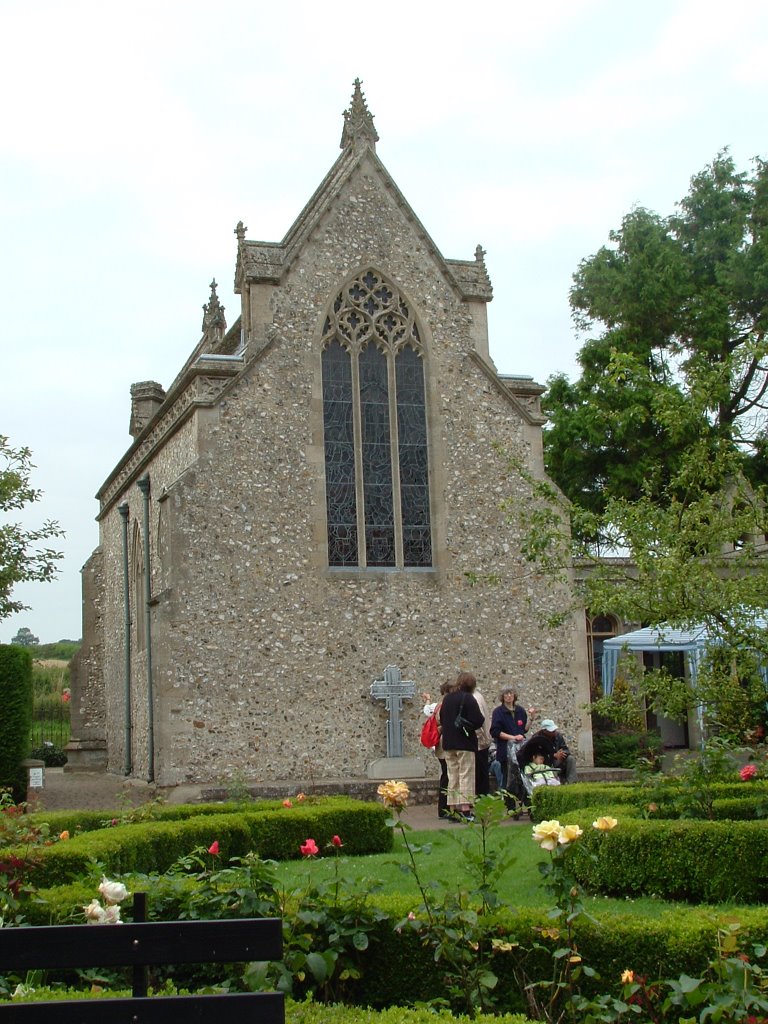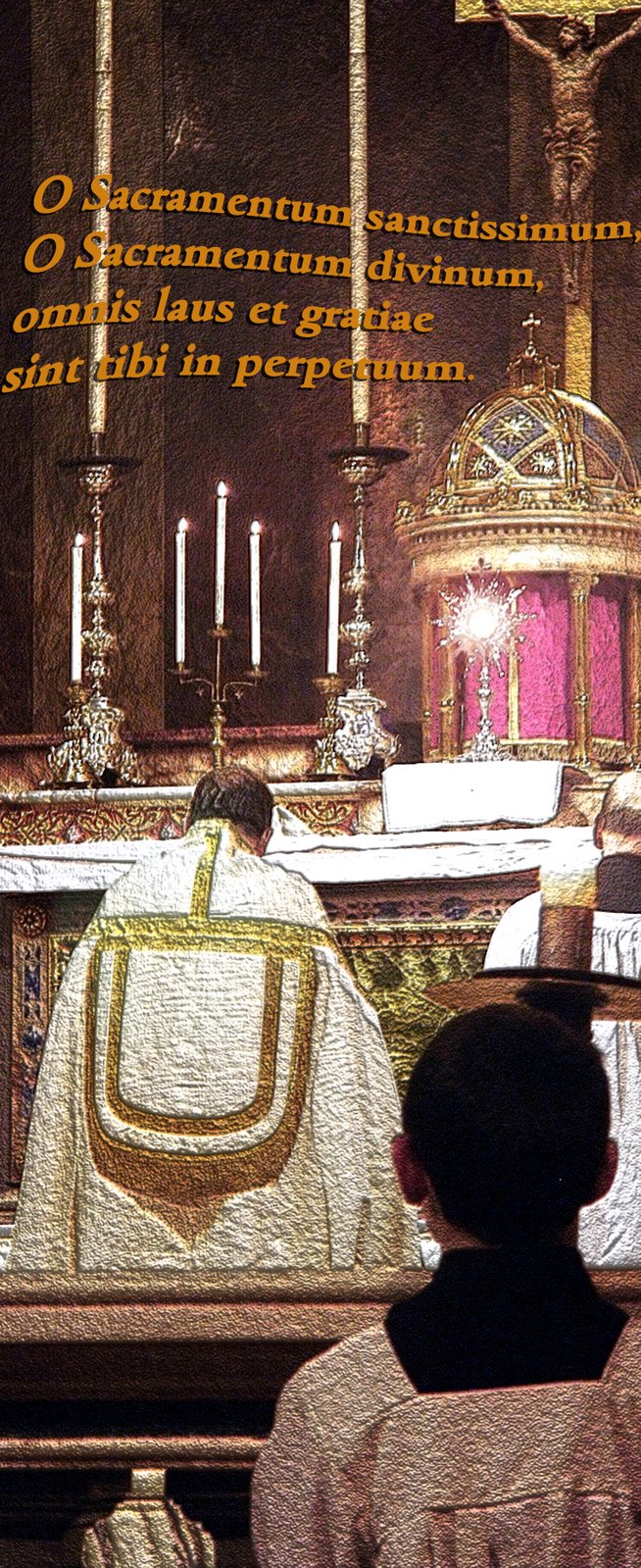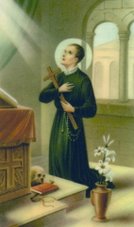1) Birmingham Oratory

I have been regularly attending this magnificent church for about 2 years now, and I can't imagine going anywhere else! Not only is it the most beautiful church in Birmingham
(nay, the world) but my family has received an immense wealth of love and support from everyone there; the parishioners, always keen to meet and greet us; the Fathers - who go out of their way to provide pastoral support, spiritual direction, frequent confessions (before every mass), even tridentine masses! There always seems to be so many people making such an effort to support the church, its fantastic reverent liturgy, the interior furnishings, the music etc. and without receiving glory for themselves. So this was an easy first choice. My experiences of the Faith through attending the Oratory provide me with a lot to reflect upon (and blog about!) each week.
2) My Home

Arguably the most important 'Catholic Place' for any family is their own home. We do our best to sanctify our lives based on our calling from God; I like to think that through our nurturing home environment, we are hospitable to others and provide a good place to raise our children. Wendy is to thank for most of this - she is an excellent host and loves to have people to stay. It is not the building itself which is important (we rent our property, and its a bit rough around the edges!) but the way we use the space. We adorn our living room with plenty of books, religious pictures, statues, paintings and photographs. This all helps to remind us to thank and serve God in everything we do. There is also a television and DVD player, which we love to watch movies on. This is an area which are trying our best to sanctify, so our items of furniture no longer all point towards the television, and we are not renewing our TV license after September which will mean we won't be at the mercy of the usual broadcast rubbish.
"An Englishman's home is his Castle"3) Walsingham

The first time I visited Walsingham was shortly after my marriage in May 2004. It was really the start of a major conversion in me towards the Catholic Faith (after a number of years in gnosticism). Wendy and I love to visit my cousin
Janie, who runs a Bed & Breakfast a short drive from the shrine, and always provides us with hospitality and spiritual sustenance. It is a home away from home. In one of her spare rooms downstairs, she has a statue of Our Lady which was obtained from an old convent, which is adorned by numerous rosaries from previous pilgrims staying in the house. I had the privilege last weekend to make a fresh crown for Our Lady with wild flowers (all with a special significance) and to crown the statue myself. This was a special May devotion for us, having missed this ceremony at the Oratory this year!
4) St Chad's Cathedral

This Cathedral has had a turbulent past in recent years, but is now enjoying a period of restoration under the excellent guidance of Fr. Brian Doolan, the Cathedral Dean. I have
written enough about the architecture, so will simply say this is the Mother Church of our Archdiocese and has a special place in my heart. It was here where my wife was present at the Rite of Election in 2005, to be greeted by the Archbishop for final formation before being received into the Holy Catholic Church. I took a special part in this process, because I myself was preparing my own personal commitment, and relit my baptismal candle at the Easter Vigil that year. When I have had the opportunity since to wander into the Cathedral, it has always been a special place of prayer where I could make fresh petition to Our Lord and Our Lady for my intentions. It is open from 8am till 5pm weekdays, which is useful for people working in the City Centre, maybe even to attend Mass at 7.30am or 12.15pm.
5) Rome

The obvious choice! I last went in the summer of 1999 (notice all the scaffolding on the front of St. Peter's Basilica in my photo), and am desperate to take Wendy and Maddy to this wonderful city. I cannot say much else, except that there is always a magnificent church nearby, wherever you are, and the city feels distinctly like home for any Catholic.
Hat tip to
Fr. Dwight Longenecker for starting this intriguing
"meme"! I won't "tag" anyone else because everyone who reads me, reads Joe Bloggs, so will be suitably inspired (or not) to do this. God bless!
003.JPG)
004.JPG) We had the pleasure today to visit a family with a beautifully decorated home, complete with a Chapel in one of their downstairs rooms. Have you ever wondered what happens to the church art which is jettisoned from closing convents and wreckovated churches? Some lay people are keen to preserve our patrimony, and this is a beautiful example. I hasten to add the sanctuary lamp was not lit.
We had the pleasure today to visit a family with a beautifully decorated home, complete with a Chapel in one of their downstairs rooms. Have you ever wondered what happens to the church art which is jettisoned from closing convents and wreckovated churches? Some lay people are keen to preserve our patrimony, and this is a beautiful example. I hasten to add the sanctuary lamp was not lit.



























 Her reputation preceded her, and she was soon charged by the Jesuits to establish a girls educational institute based on devotion to the Sacred Heart of Jesus (a certain antidote to her Jansenist upbringing). On November 21, 1800, she began her religious life, and was even appointed superior of the second convent in Amiens for poor children - at the age of 23!! Her first act was to kneel and kiss the feet of all her sisters. Six years later she was voted Superior General; a position she retained for life.
Her reputation preceded her, and she was soon charged by the Jesuits to establish a girls educational institute based on devotion to the Sacred Heart of Jesus (a certain antidote to her Jansenist upbringing). On November 21, 1800, she began her religious life, and was even appointed superior of the second convent in Amiens for poor children - at the age of 23!! Her first act was to kneel and kiss the feet of all her sisters. Six years later she was voted Superior General; a position she retained for life.







 The Feast of the Ascension. In our Lord's rising up to heaven we are reminded of humanity piercing into the divine; our hope and promise of salvation before us in the person of Jesus Christ. He went up so that the Holy Spirit may be brought down into our lives, making present the salvific action of Christ through the transformation of our earthly lives in the Sacraments.
The Feast of the Ascension. In our Lord's rising up to heaven we are reminded of humanity piercing into the divine; our hope and promise of salvation before us in the person of Jesus Christ. He went up so that the Holy Spirit may be brought down into our lives, making present the salvific action of Christ through the transformation of our earthly lives in the Sacraments.
























